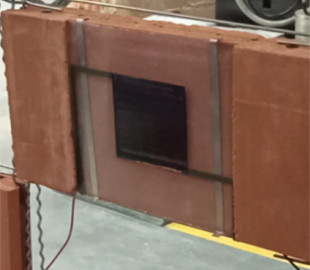
“Solar brick” can cover roofs, facades, platforms, and also be used as a curtain wall, say researchers.
A research group led by the International University of Catalonia in Spain has developed a “solar brick”, combining textile ceramic technology (TCT) and perovskite photovoltaic cells. The portal pv magazine writes about it.
The TCT technology is reported to be a system of ceramic blocks mounted in a steel wire mesh. It was designed for use mainly on facade cladding, but also on roofs, patios and as a curtain wall.
One of the advantages of TCT is the reduction of construction time, as traditional ceramic cladding systems require a manual process on site when bricks are laid one by one, connecting with mortar. Moreover, the large size of the shells makes it possible to cover the ground, facade and roof with the same element.
According to the researchers, the “solar brick” is a system in which a perovskite solar module compatible with the TCT grid is integrated. The scientists used welding to create the electrical connections for the module, which was built into a groove with an inclined geometry. They also used double L-shaped stainless steel plates to connect the solar module to the ceramic parts.
200% Deposit Bonus up to €3,000 180% First Deposit Bonus up to $20,000“It should be noted that the groove is not always made in the center of the ceramic product, it can be made further to the right or left to provide different possibilities and play a little with the composition,” — the scientists noted.
Researchers emphasized that the “solar brick” was designed from scratch and passed shock, vibration and thermal shock tests. Tests have shown that the perovskite solar module is practically not affected by solid bodies, however, the groove made in the ceramic part for the installation of the PSM reduces the strength of the brick.
“If exposed to hail, there is a decrease in efficiency, although the cell continues to work . In the vibration test, some fragility of the electric welding is observed. One of the failures occurred during the test at a frequency of 10 Hz. the scientists reported.
In summary, the researchers concluded that the “solar brick” performed well “overall” and has market potential. The main problem is the fragility of ceramic parts, so a revision of the brick design is planned.
“We plan to bring this technology to the market,” — lead researcher Pedro Casariego told journalists.

